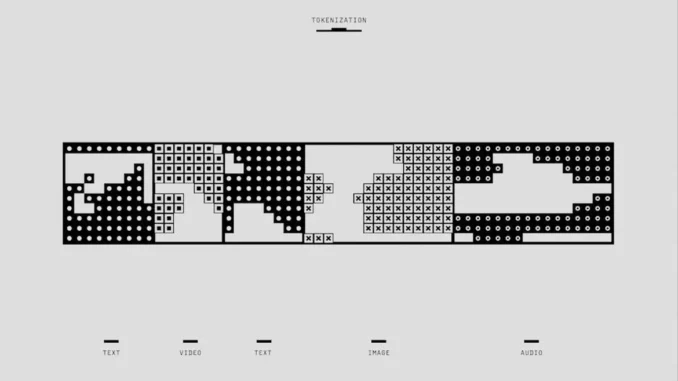
Summary
Innovative Sidechaining Model Promises Major Blockchain Scalability Breakthrough
In the ever-evolving landscape of blockchain technology, the introduction of the Customized Sidechaining Model with Iterative Meta-Heuristics (CSIMH) marks a potential turning point in addressing critical scalability challenges. Dr. Martin Ellis, a leading blockchain researcher and integral figure in the CSIMH initiative, emphasises the model’s unique ability to dynamically adjust configurations to meet specific data storage and security needs, thereby enhancing blockchain’s scalability and security.
Main Article
In a digital era increasingly reliant on blockchain technology, addressing the inherent scalability issues of these systems is crucial. The immutable and secure nature of blockchain, while advantageous, leads to slower performance as data accumulates. The CSIMH model, developed by a team led by Dr. Martin Ellis, emerges as a transformative solution that could redefine scalability standards in blockchain technology.
The Genesis of CSIMH
Dr. Ellis, in an insightful discussion, outlined the motivations and innovations behind CSIMH. Traditional sidechains, often heralded as solutions to blockchain’s scalability woes, have not lived up to expectations due to their rigid configurations. “Sidechains were supposed to alleviate these issues,” Dr. Ellis remarked, “but their static nature limited their flexibility in adapting to varying security and capacity needs.”
The CSIMH model introduces a novel approach, focusing on dynamic scalability. It is engineered to adapt sidechain configurations according to specific data storage and security requirements, thus offering enhanced scalability beyond conventional limitations. “Our objective was to construct a model that could intelligently adjust, enabling more efficient and secure data handling,” Dr. Ellis explained.
Iterative Meta-Heuristics: The Heart of CSIMH
Central to CSIMH’s innovation is the integration of iterative meta-heuristic algorithms. These algorithms enable the continuous refinement of sidechain configurations, responding to changes in data volume and security demands. “It’s akin to a learning process,” Dr. Ellis elaborated. “The system evolves from past configurations, optimising itself without sacrificing security.”
This adaptability is vital for environments demanding swift and efficient resource allocation, such as IoT, mobile ad-hoc networks, and sensor networks. Dr. Ellis emphasised, “In these dynamic settings, efficiency and speed are critical, and CSIMH excels in both.”
Security as a Priority
Security remains a cornerstone of the CSIMH model. Dr. Ellis was particularly emphatic about the rigorous testing the model has undergone to ensure its resilience against security breaches. “Security is non-negotiable,” he asserted. “CSIMH’s security-oriented design has been validated through extensive simulations, including various attack scenarios.”
The model’s robust architecture ensures data integrity and confidentiality, crucial in maintaining trust in blockchain systems. “Our simulations consistently demonstrate that CSIMH is equipped to withstand a wide array of threats,” Dr. Ellis confirmed.
Practical Implications and Future Directions
The successful implementation of CSIMH could have far-reaching implications. Dr. Ellis highlighted its potential in decentralised environments that require high security, adaptability, and speed. “Its efficiency in managing high-speed, low-energy environments makes it perfect for IoT and mobile ad-hoc networks,” he noted.
Dr. Ellis further envisioned CSIMH revolutionising data exchanges between IoT devices, reducing latency and overcoming resource constraints. Beyond IoT, he sees its applications in sectors like healthcare and finance, where data sensitivity and protection are paramount. “CSIMH could streamline data processing while ensuring compliance with privacy and security standards,” Dr. Ellis suggested.
As our conversation concluded, Dr. Ellis hinted at ongoing research into additional heuristic methods for sidechain configuration. “There’s always room for innovation,” he stated. “Exploring genetic algorithms, for instance, could lead to even more efficient resource utilisation and resilience strategies.”
Detailed Analysis
The introduction of CSIMH into the blockchain ecosystem represents a significant leap forward, particularly in how it addresses scalability—a long-standing hurdle in blockchain adoption. By harnessing iterative meta-heuristics, the model not only enhances data handling capabilities but also fortifies security, which is vital in the face of escalating cyber threats.
The adaptability of CSIMH is a response to the growing demand for blockchain applications in fast-paced sectors like IoT, where speed and efficiency are paramount. As industries increasingly digitalise, the need for systems that can securely and efficiently manage large volumes of data becomes ever more critical. CSIMH’s ability to dynamically recalibrate based on real-time needs positions it as a pivotal technology in these evolving landscapes.
Further Development
The CSIMH model’s potential to set new standards in blockchain technology is undeniable. As Dr. Ellis and his team continue to refine this innovative approach, the focus will likely shift to real-world implementations and pilot projects that demonstrate its efficacy in diverse sectors.
Future investigations into additional heuristic methods could further enhance CSIMH’s resource management capabilities, potentially unlocking even greater efficiency and resilience. The ongoing research and potential collaborations with industry stakeholders underscore the promise of CSIMH in shaping the next generation of blockchain applications.
Readers are encouraged to follow updates on the CSIMH model and its applications, as further developments are anticipated to unfold in the coming months, offering deeper insights into its transformative potential across various sectors.

